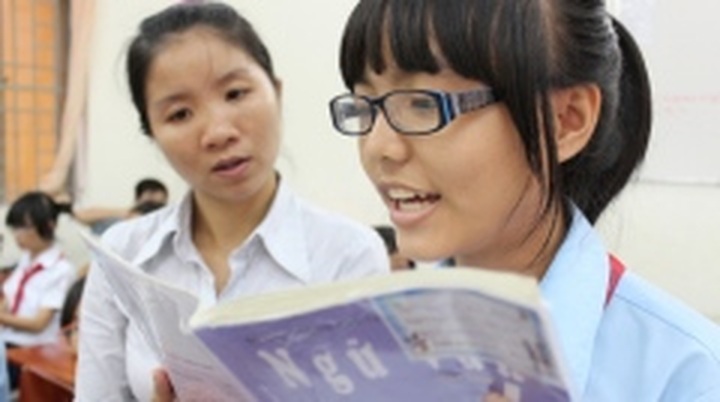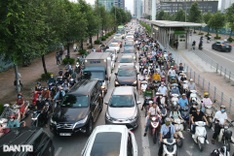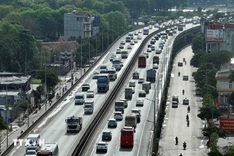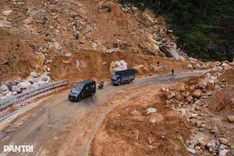Textbooks are often believed to contain factual knowledge. But teachers, and even parents, have pointed out myriad mistakes in the materials which are used to teach K-12 students in Vietnam.
 |
| A 6th-grader at Ly Phong Middle School, located in Ho Chi Minh City's District 5, is shown reading a literature textbook. Teachers have pointed out numerous inaccuracies in textbooks currently used in Vietnamese schools. Photo: Tuoi Tre |
A sixth-grade literature lesson, in the meantime, somewhat distorts a popular Vietnamese ancient legend by incorporating modern elements like cellphones, bulldozers, helicopters, amphibious vehicles, and reinforced concrete into its follow-up exercises.
“The legend has lost its artistic and historical significance due to these additions,” Hoang Duc Huy, a literature teacher in Ho Chi Minh City, remarks.
Many chemical reactions do not occur in the way that chemistry textbooks describe, complains Pham Van Truong, a teacher at Q.L. High School in the central province of Nghe An.
Errors related to dates of birth, names, and time and location references can be found easily in current textbooks, many teachers have protested.
The discovery of artificial radioactivity is, for instance, attributed to Marie Skłodowska-Curie and Pierre Curie in 12th-grade physics textbooks, while it was actually their daughter and son-in-law who were awarded the Noble Prize for discovering the phenomenon in 1935, a lecturer at the University of Science in Hanoi elaborates.
Nguyen Quang Minh, a math teacher at Tran Hung Dao High School, also located in Hanoi, grumbles that mathematical concepts and symbols are inconsistently presented in textbooks, and that they even provide contradictory definitions in different lessons.
Problems with word usage and explanations are also rampant, a reference book author says.
Meanwhile, 1st-graders are challenged by incomprehensive sentences written in their literature textbooks, a parent from Ho Chi Minh objects.
Many proper nouns are even in lower case, he says.
Nguyen Vinh Hien, Minister of Education and Training, said that corrections are annually made to textbooks based on comments and suggestions by teachers and the whole society.
But “minor mistakes” should be corrected by teachers themselves, whereas the textbook publisher – the Education Publishing House – would only take care of “big ones.”
The ministry will step in if there is any deviation from the education philosophy and general principles, Hien explained.
The official also revealed that a new set of textbooks would be prepared in a more consistent way.
Vietnam now uses only one set of standardized textbooks to educate K-12 students, while many other countries have utilized more than one for quite a long time, Hien said.
Textbooks are prepared by the Ministry of Education and Training and solely published by its Education Publishing House department.
Earlier this year, a public debate erupted when the ministry put forward a USD3.3 billion proposal to design a new curriculum and prepare new textbooks.
Many denounced it as excessive funding, while the ministry explained that only 1.4 percent of the amount would be spent on the work, with the rest dedicated to training teachers and education managers, and upgrading facilities.




















